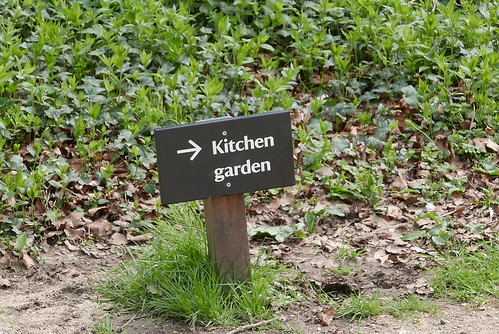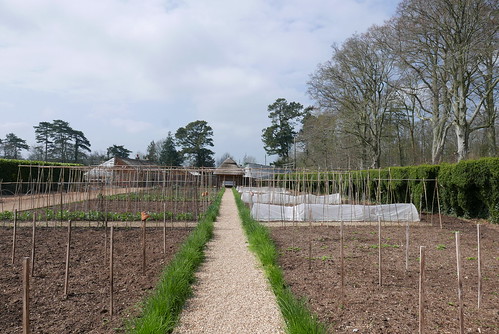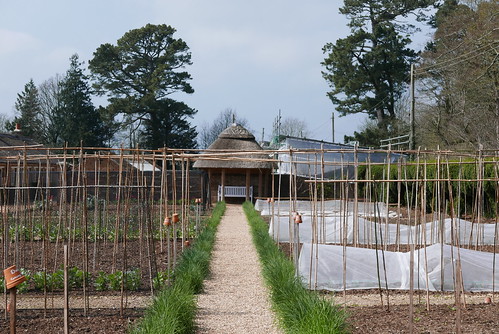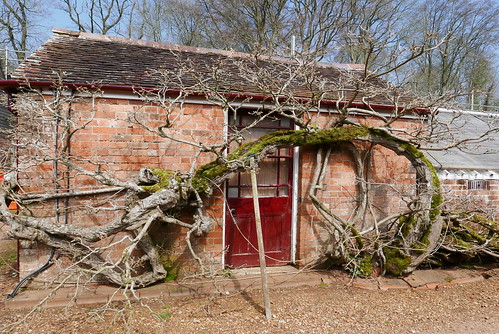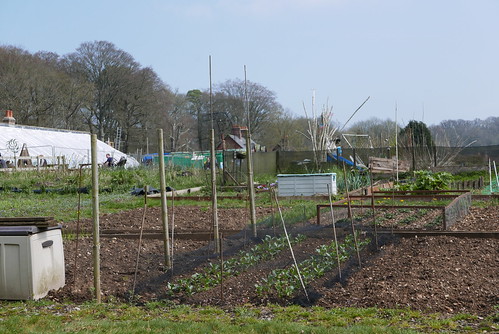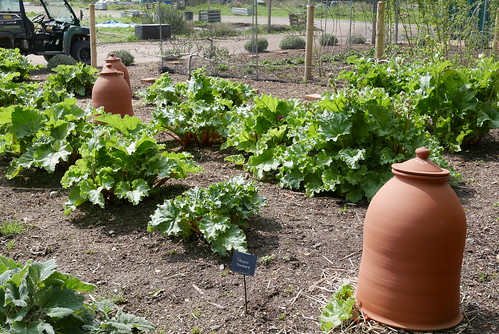Wednesday, 11 July 2018
Thursday, 5 July 2018
Thursday, 31 May 2018
15 sensational plant combinations you can try at home from the RHS Chelsea Flower Show 2017 | Jack Wallington Garden Design, Clapham in London
The war on slugs starts at home. Toby Buckland.
- The war on slugs starts at home - Telegraph:
- drop slugs and snails into boiling water
let it stand for few days until it smells strongly
water around endangered crops
- Recipe collect slugs in jar with lid and leave for two days.
Tip out into egg carton and burn them over wood fire in garden grill pan.
Sieve ash and grind down then scatter around plants or border edges in square potagers.
Acts as a deterrent and whilst pepper ash does not go far, a solution using 1part slug ash to nine parts diluting substance (ash or water) can then be ground and poured around plants.
Kept in an airtight tin this dilution can be kept for several years.
'via Blog this'
- drop slugs and snails into boiling water
let it stand for few days until it smells strongly
water around endangered crops
- Recipe collect slugs in jar with lid and leave for two days.
Tip out into egg carton and burn them over wood fire in garden grill pan.
Sieve ash and grind down then scatter around plants or border edges in square potagers.
Acts as a deterrent and whilst pepper ash does not go far, a solution using 1part slug ash to nine parts diluting substance (ash or water) can then be ground and poured around plants.
Kept in an airtight tin this dilution can be kept for several years.
'via Blog this'
Sunday, 20 May 2018
Thursday, 19 April 2018
Making sowings of...
beetroot, carrots, parsnips, lettuce, spinach, spring onions, kohl rabi, radish, turnips, early peas, Swiss chard.
Courgettes, marrows, squashes, cucumbers and pumpkins are known as curcurbits, and can all be sown in the same way – in individual 5cm pots, under cover.
Courgettes, marrows, squashes, cucumbers and pumpkins are known as curcurbits, and can all be sown in the same way – in individual 5cm pots, under cover.
Saturday, 14 April 2018
Wednesday, 28 February 2018
Tuesday, 27 February 2018
Tuesday, 16 January 2018
Tales of compost by Gloria Nicol
Gloria Nicol's loam sweet loam | Life and style | The Guardian:
At the first sight of blossom something happens to me. The sap starts to rise and I become seriously overambitious. It has happened so often now that I know the signs; of course this year will be the one, the one when I grow absolutely everything. Hope and enthusiasm is all well and good, but reality means remembering to plant the seeds.
So to begin, some tidying up is required. To make space to plant a container grown quince tree I first need to move the compost heap. As a lazy but dedicated composter I avidly collect my kitchen waste, add it to the pile but then do very little else. I learnt early on that kitchen scraps alone can make for a slimy result, so I add plenty of egg boxes, cardboard and crumpled paper along with fruit peelings. Apart from that, I know I should turn the heap every now and again to help the aerobic process along and encourage faster decomposition, but I don't. My method falls somewhere between aerobic and anaerobic, by adding enough cellulose the breakdown takes longer but the eventual outcome seems to be the same. Apart from one little detail; there will be lots of seeds in there too as the advantage of turning the heap regularly is that it helps the heap to heat up and kill the seeds lurking within. So I'm just going to have to pick out the seedlings as they appear as penance for my laxity.
My well rotted compost unearthed from the bottom of the heap had the enviable look of a fine tilth, black and friable, just like you buy from a shop! I could spread it on the raised beds, but don't think it will go very far, or perhaps it would be best used to make my own seed compost, as there will be plenty of seed sowing needs doing if I am to achieve this year's target to grow absolutely everything.
Seed compost doesn't need to be nutrient rich as the seeds come with their food requirements already built in. Seed compost is only meant to give the seeds the start in life they need for the first few precious weeks before being potted on or planted out to a more particularly suited environment. The main thing is that the compost allows some drainage so seedlings have the oomph to germinate. What else does my seed compost need? All the books use the word 'loam'. Making loam entails stacking turf, grass side to grass side, and leaving it to rot down for a year or two, but a two-year wait isn't going to help my 2012 planting schedule. So is loam not just soil? The field behind my house has molehills springing up all over the place, so I decided to collect some to use instead. The moles have done the sifting and aerating for me. One thing to note here: you shouldn't collect molehills from land you don't own without permission.
So I've mixed my compost with molehill loam and added in a handful of sharp sand to keep it nicely opened up. If I had leafmould or coir I might be tempted to include some of them too. Molehills also come with a fair share of seeds, so to give my seedlings the best start in life I bake seed compost in the oven to be sure it is sterile and free from weeds. To do this, place compost in an oven proof container in an even 10cm deep layer, cover with tin foil and bake at 80˚C for 30 minutes. Or alternatively a microwave will do the job (cling film instead of tin foil) for a few minutes on high power. Be warned, it makes your house stink.
'via Blog this'
At the first sight of blossom something happens to me. The sap starts to rise and I become seriously overambitious. It has happened so often now that I know the signs; of course this year will be the one, the one when I grow absolutely everything. Hope and enthusiasm is all well and good, but reality means remembering to plant the seeds.
So to begin, some tidying up is required. To make space to plant a container grown quince tree I first need to move the compost heap. As a lazy but dedicated composter I avidly collect my kitchen waste, add it to the pile but then do very little else. I learnt early on that kitchen scraps alone can make for a slimy result, so I add plenty of egg boxes, cardboard and crumpled paper along with fruit peelings. Apart from that, I know I should turn the heap every now and again to help the aerobic process along and encourage faster decomposition, but I don't. My method falls somewhere between aerobic and anaerobic, by adding enough cellulose the breakdown takes longer but the eventual outcome seems to be the same. Apart from one little detail; there will be lots of seeds in there too as the advantage of turning the heap regularly is that it helps the heap to heat up and kill the seeds lurking within. So I'm just going to have to pick out the seedlings as they appear as penance for my laxity.
My well rotted compost unearthed from the bottom of the heap had the enviable look of a fine tilth, black and friable, just like you buy from a shop! I could spread it on the raised beds, but don't think it will go very far, or perhaps it would be best used to make my own seed compost, as there will be plenty of seed sowing needs doing if I am to achieve this year's target to grow absolutely everything.
Seed compost doesn't need to be nutrient rich as the seeds come with their food requirements already built in. Seed compost is only meant to give the seeds the start in life they need for the first few precious weeks before being potted on or planted out to a more particularly suited environment. The main thing is that the compost allows some drainage so seedlings have the oomph to germinate. What else does my seed compost need? All the books use the word 'loam'. Making loam entails stacking turf, grass side to grass side, and leaving it to rot down for a year or two, but a two-year wait isn't going to help my 2012 planting schedule. So is loam not just soil? The field behind my house has molehills springing up all over the place, so I decided to collect some to use instead. The moles have done the sifting and aerating for me. One thing to note here: you shouldn't collect molehills from land you don't own without permission.
So I've mixed my compost with molehill loam and added in a handful of sharp sand to keep it nicely opened up. If I had leafmould or coir I might be tempted to include some of them too. Molehills also come with a fair share of seeds, so to give my seedlings the best start in life I bake seed compost in the oven to be sure it is sterile and free from weeds. To do this, place compost in an oven proof container in an even 10cm deep layer, cover with tin foil and bake at 80˚C for 30 minutes. Or alternatively a microwave will do the job (cling film instead of tin foil) for a few minutes on high power. Be warned, it makes your house stink.
'via Blog this'
Subscribe to:
Comments (Atom)























